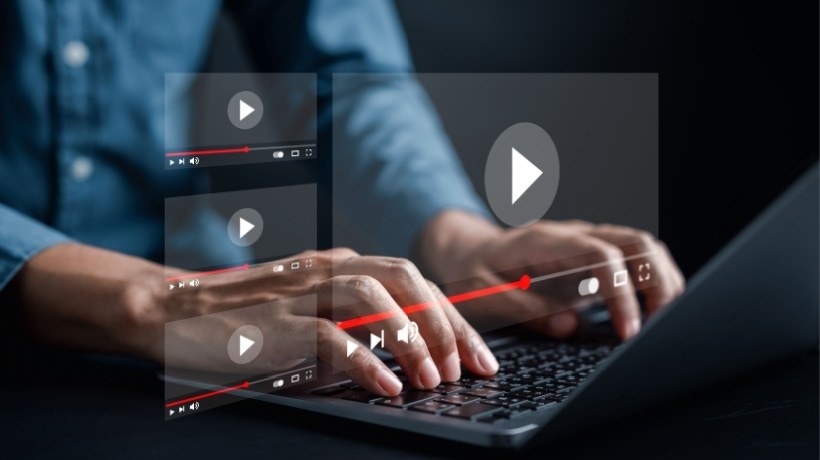Microlearning For Higher Education
Learning has taken on new dimensions in today's fast-paced and ever-changing world. With the rise of technology and the internet, people consume information faster than ever. This is especially true for younger generations, who have grown up in a world where social media and short-form content are the norms. Unsurprisingly, microlearning has become a popular trend in education and training, particularly in the corporate world. However, higher education can benefit from incorporating microlearning into their teaching methods.
So what exactly is microlearning? Simply put, microlearning is the process of delivering learning content in short, bite-sized chunks. Instead of lengthy lectures or presentations, microlearning breaks down information into smaller, more manageable pieces that can be consumed quickly and easily. This approach has been proven effective in the corporate world, where employees are often overwhelmed with information and need more time for training. Microlearning allows them to learn on the go, at their own pace, and in an engaging and interactive way.
The Benefits
One of the main benefits of microlearning is its ability to improve knowledge retention. Research has shown that people need to put in more attention, especially when learning new information. By breaking down content into smaller pieces, learners are more likely to absorb and retain the presented information. This is particularly important in higher education, where students are often bombarded with a high volume of information, making it difficult to retain everything.
Another benefit of microlearning is its flexibility. With traditional lectures and presentations, students must often sit and listen to a speaker for long periods. This can be tedious and disengaging, particularly for younger generations who are used to consuming information in shorter, more interactive, formats. Conversely, microlearning can be delivered in various formats, such as videos, podcasts, infographics, and interactive quizzes. This allows students to choose the format that best suits their learning style and enables them to learn in an engaging and interactive way.
An additional benefit of microlearning is its ability to support just-in-time learning. Just-in-time learning refers to the process of learning new information when it is needed, rather than trying to learn everything in advance. This approach is particularly useful in the corporate world, where employees must quickly learn new skills or knowledge to complete a specific task. In higher education, just-in-time learning can help students prepare for exams or complete assignments. By breaking down information into smaller pieces, students can quickly access the information they need, when they need it.
It's also important to note that microlearning doesn't replace traditional teaching methods, but rather, complements them. Lectures and textbooks still have a role to play in higher education, but they can be enhanced by incorporating microlearning into the mix. By providing a variety of learning formats, institutions can create a more engaging and personalized learning experience for their students. Types of content delivery that microlearning can replace, at times, include traditional lectures, which can often be long and monotonous. Instead, lectures can be broken down into shorter, more manageable pieces, allowing students to consume the information in a more engaging way. Similarly, textbooks and other written materials can be condensed into shorter, more focused pieces of information, making them easier to consume and understand.
One of the key factors driving the popularity of microlearning is the changing preferences of younger generations. Millennials and Generation Z, in particular, are used to consuming information in shorter, more visual formats. Social media platforms have popularized short-form content, with videos often less than a minute long. This has created a generation of learners accustomed to consuming information in short, bite-sized chunks. Institutions can better engage and connect with these younger learners by incorporating microlearning into higher education.
How To Implement Microlearning For Higher Education
So, how can higher education institutions incorporate microlearning into their teaching methods? One way is to incorporate technology into the learning process. Institutions already use Learning Management Systems (LMS) to deliver online course content. By incorporating microlearning into these systems, institutions can create short, interactive modules that students can complete independently. This allows for a more flexible and personalized learning experience, which can be tailored to individual student needs.
Another way to implement microlearning in higher education is to incorporate it into the classroom setting. Instructors can break down lectures into shorter segments, with interactive quizzes and activities that engage students and promote active learning. Similarly, traditional textbooks and written materials can be condensed into shorter, more focused pieces of information, making them more accessible for students to consume and understand.
One potential challenge with microlearning in higher education is the need for a significant investment in technology and resources. Creating high-quality, interactive learning modules can be time-consuming and expensive, and not all institutions have the resources to support this type of initiative. However, several low-cost and no-cost options are available, such as using free online tools to create interactive quizzes or leveraging existing resources, such as open educational resources (OER), to develop microlearning content.
Conclusion
In conclusion, microlearning is an effective teaching method that can benefit higher education institutions by improving knowledge retention, increasing engagement, and providing a more personalized learning experience. By incorporating microlearning into their teaching methods, institutions can create a more flexible and interactive learning environment that meets the needs of today's learners. While there may be challenges to implementing microlearning, the benefits are clear. Higher education institutions should consider incorporating this approach into their teaching methods to enhance student learning and engagement.









